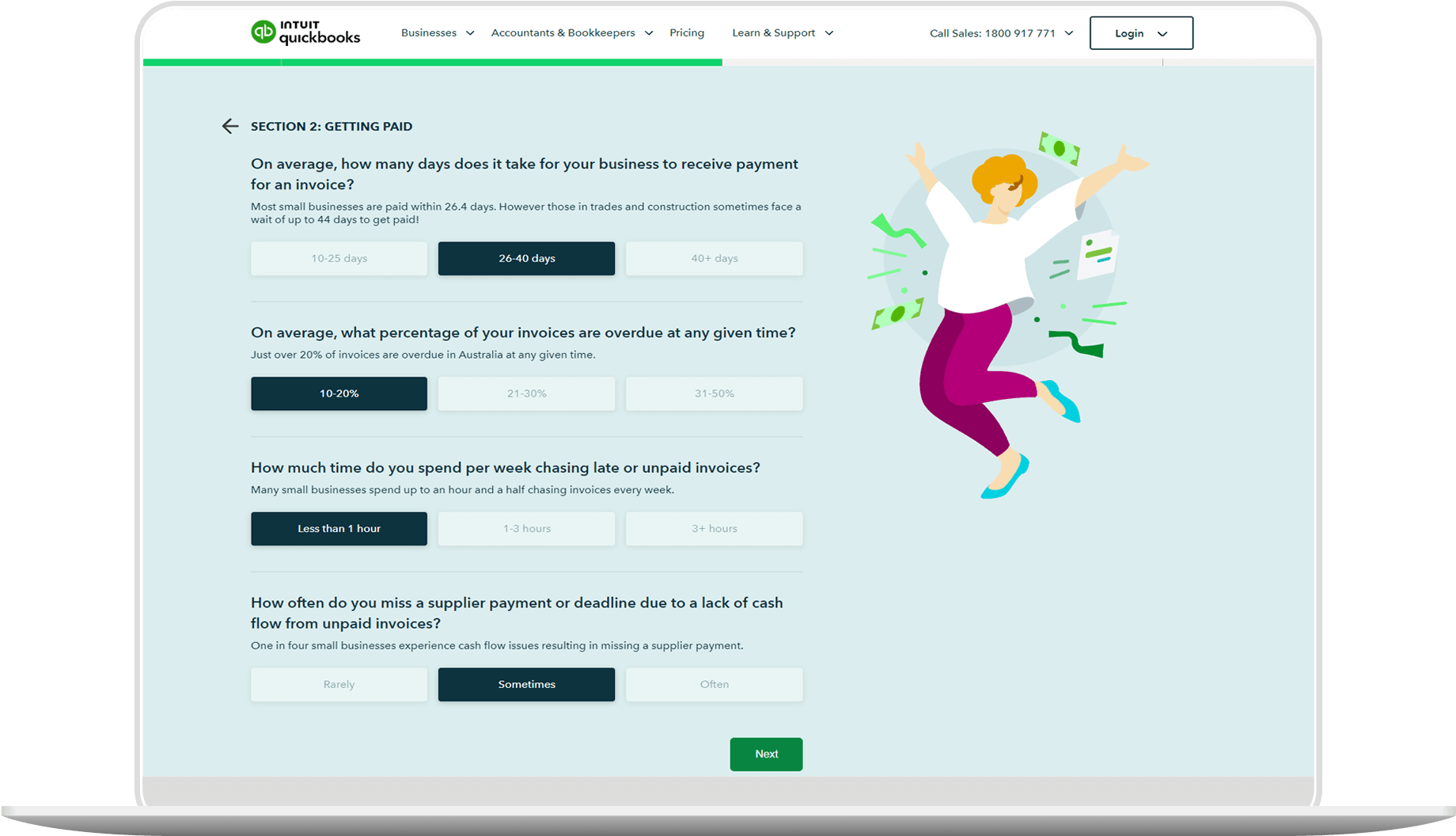Using the tax brackets above, let’s look at how a second job could increase the tax you owe. Say that your first job pays $35,000 annually. You already know that you’re going to be a taxpayer at the end of the financial year. Knowing that you’ve already crossed the tax-free threshold, you take on a second job to help boost your earnings. In your second job you earn over $10,00.
However, when you do so, you end up sending yourself into a higher tax bracket because your combined total annual income now exceeds $45,000. You’ll end up having to pay a higher tax rate on the additional income. But again, because this higher rate only applies to what you earn over the $45,000, you’ll still end up taking home more money overall.
Use QuickBooks free income tax calculator to estimate your taxable income from both of your jobs.
If you’re confused about your taxable income, we recommend reading our guide to income tax and speaking with a trusted accountant who can better explain how the various tax brackets work in Australia. You can also use accounting software to track how much you earn throughout the year so that you can better estimate your year-end tax payable.
Changes to the way taxes are withheld
The tax-free threshold impacts the way taxes are withheld if you work as a sole trader in your second job or if you have 2 employers.
How taxes are withheld by sole traders
The tax-free threshold impacts the way taxes are withheld from your income if your second job is as self-employed sole trader or freelancer. If you work as a freelancer, you’re required to pay your own taxes on the income that you earn. The tax rates for sole traders are the same as individual taxpayers outlined above. This means the $18,200 tax-free threshold is available for both sole traders and individuals.
However, as a sole trader, you’re required to withhold and pay your own income taxes on income above $18,200. If working as a sole trader is your second job, you’ll probably just claim the tax-free threshold through your primary employer.
How taxes are withheld if you have two employers or a second job
If you’re employed by someone else, your employer is required to withhold tax on your behalf. But what do you do if you have two employers? Where this becomes a bit more interesting is if you’re working as an employee for two different companies. And, what do you do if you receive a government allowance or taxable pension but also work in a part-time role?
In these cases, you’re going to claim tax-free threshold rates from the employer or payer that pays the highest salary. That’s because the second employer is required to withhold tax at the ‘no tax-free threshold rate’, or higher tax rate. This serves as a tax offset and helps reduce the likelihood that you’ll incur a tax debt and owe extra tax at the end of the financial year.
Withholding tax variations
If you happen to have too much tax withheld throughout the year, you’ll receive a tax refund. One way to avoid having too much money withheld is by tracking your funds and filing a withholding declaration when you cross the tax-free threshold rate. Filing a withholding declaration authorises your payer to adjust the amount of tax withheld from your payments.
A pay-as-you-go (PAYG) system creates fewer problems down the road and attempts to reduce the amount that you’ll owe at the end of the year. If you happen to notice that employers are withholding way too much money from your paychecks, you’ll need to submit a PAYG withholding variation application. Upon doing so, the government will look at your earnings and come up with a varied withholding rate. The government will then pass this rate on to your employers who will institute the changes on your next payslip. The purpose of withholding variation is to ensure the amount you withhold during the year is as close as possible to your year-end tax liability.
Requesting a withholding review is not something that you should treat lightly. There are only certain circumstances in which you’re allowed to make such a request:
- If you’re certain of your income amounts: keeping diligent records, like payment summaries, is an excellent way to show how much you’ve earned.
- If you’re disadvantaged by the current withholding rates: you should have proof, or a strong inclination, that you’re losing money under the current rate system. You should not apply merely to see if you can secure a better tax rate.

















